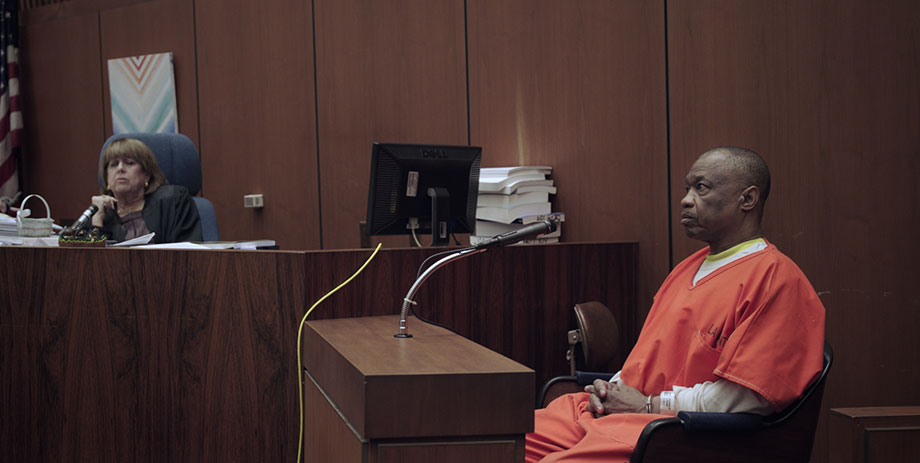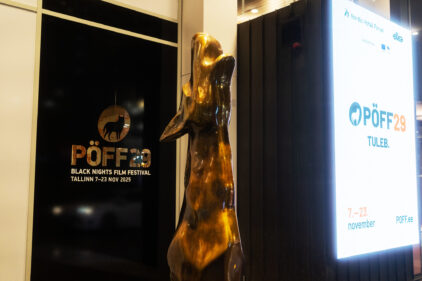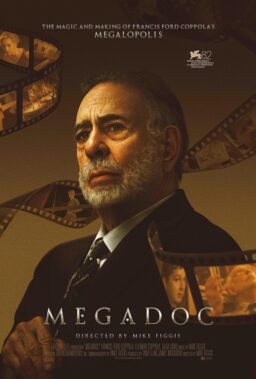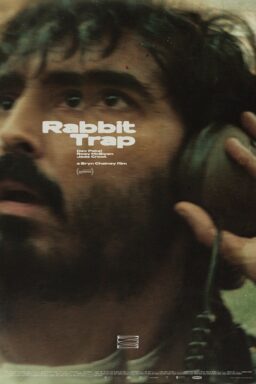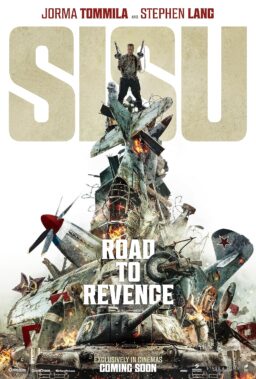Three of best non-fiction films of this year screened at the
2014 Toronto International Film Festival, and all three provoked conversations
throughout town. How does one tell a true crime story in a way that reflects on
the state of race relations and economic inequality in this country differently
than film has before? How does a leading man turn a dinner conversation into a
masterful meditation on craft and commitment to art? How does a director
follow-up a breakthrough film like the award-winning “The Act of Killing”? I
didn’t get a chance to see many documentaries at this year’s TIFF, but the
three I saw were all phenomenal, films you really must make an effort to seek
out as soon as you can.
The first of the trio likely to make its way to your senses
is Nick Broomfield’s “Tales of the Grim
Sleeper,” as it was just picked up by HBO Documentary Films. The true crime
documentary is a glutted genre, and the fact that there are whole channels on cable
devoted to repeats of programs like “48 Hours Mysteries” makes theatrical
variations on the theme harder to stand out. Broomfield’s film does so by
taking a unique approach to the genre in that the inquisitive director doesn’t
interview police officers, prosecuting attorneys or even journalists. Instead,
he focuses solely on the community impacted by not just crime but a system that
has decided a certain degree of murder in this part of the city is acceptable.
Broomfield speaks to neighbors, victims, family members, street walkers, drug
dealers, etc. In doing so, he captures not just the grisly details of a serial
killer but how we’ve evolved into a state of being in impoverished communities
in which this kind of darkness is tolerated. It’s a true crime documentary that
simultaneously plays as societal critique and a call for reassessment of how we
value human life.
Lonnie Franklin Jr. may have killed over 100 prostitutes and
drug addicts in South Central L.A. over the last quarter-century. He was
finally arrested in 2010 and will soon go on trial for about a dozen of those
crimes. If the evidence is to be believed, Franklin was a sex addict who traded
Polaroid photos of the women he paid for sex, many of whom he killed after the
transaction was complete. Bodies were dumped all over Los Angeles, from the
alleys of South Central to, possibly, the dump at which Lonnie worked. And the
system barely registered the fact that women were disappearing because the
tragic fact is that the death of a non-white, drug-addicted sex worker doesn’t
often produce a response. Groups like the Black Coalition Fighting Back Serial
Murders tried to get to the bottom of the case, but to say that the system
designed to protect innocent lives failed these people would be an
understatement.
How did we get here? How did Lonnie Franklin go on for
decades killing people? His nickname, “The Grim Sleeper,” comes from the fact
that there was a large gap in his crimes, according to the police, as if he “went
to sleep” and then started killing again, although there’s every bit of
evidence to suggest that timeline is incorrect. He never stopped killing.
Broomfield’s film captures the story of the Grim Sleeper
from a fascinating angle—the people who knew him and knew of his crimes while
the systems of law turned the other way. We meet people who first deny Franklin’s
guilt, but slowly open up to Broomfield and his son Barney, who expertly
handles the camerawork. Hearing stories about Lonnie that should have been told
to a police officer and stopped these crimes decades ago more vividly defines
how broken our system is than any other current documentary I can think of. The
people in this community are scared of the police. They tell their children not
to interact with them. And so suspicion of people like Lonnie Franklin never
gets passed along. It is that dynamic—the one between the people paid to
protect and those who don’t trust them to do so—that allows a situation like
Franklin. He’s a monster in a part of the United States where monsters have
been allowed to run free. Broomfield’s film, especially in light of recent
racial tensions like what happened in Ferguson, couldn’t be timelier.
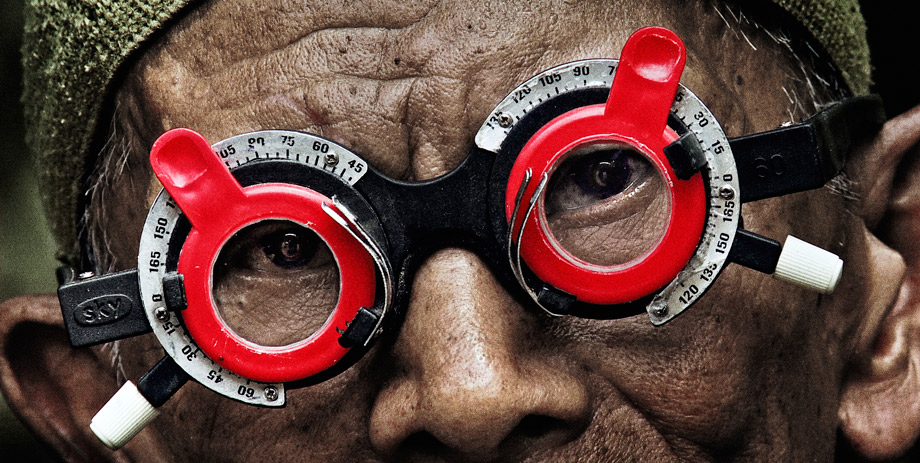
“The Look of Silence,”
Joshua Oppenheimer’s follow-up to his multiple award-winning “The Act of
Killing” is arguably a filmmaking accomplishment equal to his breakthrough. It
is the thematic complement to “The Act of Killing,” replacing that devastating
film’s demons with ghosts. It is a work that would resonate if “Killing” had
not preceded it, but does so much more deeply when viewed as a cinematic
response/follow-up to what came before. Whereas “Act of Killing” was about
anger and the violent past, “The Look of Silence” is about the regretful,
melancholy present. It is about denial wherein “Killing” was about forced
recognition. And it is just as devastating and powerful a piece of work. I have
a few more minor issues with the form here, including a few interview moments
that feel as staged as the reenactments in the first film without the
disclosure of such, but there’s no denying the emotional impact of Oppenheimer’s
work. He is already a documentarian worth the international recognition he’s
receiving.
The vile-but-fascinating Anwar Congo has been replaced by the haunted Adi, a man whose older brothers was murdered in 1965
during the genocide of people deemed Communists by the Indonesian government.
His brother Ramli wasn’t just killed, he was tortured, mutilated and dumped in
a river. Oppenheimer uses his form—filmmaking—to essentially stoke the fires of
Adi’s resentment over a denied international history and lack of responsibility
taken by the perpetrators of such crimes, some of whom still live in his
village. Adi’s father is blind, deaf and nearly immobile, and Oppenheimer uses
him as a visual motif, a man who appears to bear the pain of a devastating
national history.
Adi is an optometrist, a man who travels the back roads of
his country to help people see. In his discussions with locals, he’s realized
how many of them are blind to the past. And when Oppenheimer shows Adi a series
of videos in which the power brokers of the genocide describe their murders, it
gives him the courage to confront the people who have lived in denial for a
half-century.
Oppenheimer paces “The Look of Silence” much more deliberately
than “The Act of Killing,” discarding the reenactments in favor of conversation
about what happened, who’s responsible and how a country can’t move on until it
sees the past for what it was. Adi is a courageous protagonist, never coming
off as aggressive in his encounters with mass murderers, but never shying away
from the tough questions. One wonders how much of Adi’s questioning comes from
Oppenheimer, and “The Look of Silence” is a film that could frustrate people
who believe in the purity of the form of documentary filmmaking. I wondered how
much of what I was seeing here was truly genuine—what was actually said in the
room, for example, as Adi’s questions are often off-camera. And then I decided
I didn’t care. The end result is what matters and the end result of “The Look
of Silence” is powerful.

Finally, there’s the delightful, and surprisingly moving,
directorial debut from Ethan Hawke, “Seymour:
An Introduction.” The construction of Hawke’s conversation-driven film is
simple: the actor met the subject, Seymour Bernstein, at a dinner party, and
was fascinated enough with him to make a movie about him, assuming you’d be
fascinated with him too. The whole film unfolds with nearly constant piano
music playing in the background, as if you’re having a nice dinner in a lounge
with Mr. Bernstein himself. And it’s an unforgettable meal.
Seymour Bernstein never became a household name, but he was
well-known for a time in the world of concert pianists in New York City. He had
a promising career that he discarded to become a teacher more than a performer.
Hawke basically delivers a biographical documentary on Bernstein, although the
life details aren’t as dominant as they would have been in a less interesting
project. We learn about Bernstein’s war past, family and professional career,
but “Seymour” is really a piece that works thematically more than biographically.
It’s about craft, precision, dedication and art. Hawke says at one point
(although it should be noted he inserts himself into the film very rarely), “I’ve
been struggling recently with trying to figure out what I do,” and it’s
Bernstein’s casual philosophies that can offer all of us insight into that
struggle. “Without craft, there isn’t any real artistry.” “The real essence of
who we are resides in our talent.” I want a line of inspirational Bernstein
quotes on T-shirts. That’s how much I love what this guy has to say about life,
art and “trying to figure out what we do.” You will too.

